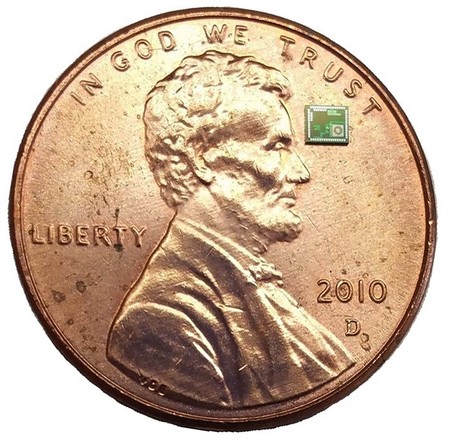Caltech researchers have developed a new kind of miniature microchip that could soon be used to create “smart pills” in which to target and treat disease. What makes this device stand out from others microscale medical devices is that it can be tracked to its exact location within the body.
Co-leader of the research and the Andrew and Peggy Cherng Professor of Electrical Engineering and Medical Engineering and Heritage Medical Research Institute Investigator, Azita Emami, advised, “The dream is that we will have microscale devices that are roaming our bodies and either diagnosing problems or fixing things. Before now, one of the challenges was that it was hard to tell where they are in the body.”

Credit: Shapiro and Emami Labs/Caltech
The new silicon-chip devices are called ATOMS (addressable transmitters operated as magnetic spins) and they work in a similar way to that of the MRI (magnetic resonance imaging), where the location of atoms are revealed using magnetic fields. “A key principle of MRI is that a magnetic field gradient causes atoms at two different locations to resonate at two different frequencies, making it easy to tell where they are,” said Mikhail Shapiro, co-leader of the study and Assistant Professor of Chemical Engineering and Heritage Research Institute Investigator. “The ATOMS devices also resonate at different frequencies depending on where they are in a magnetic field.”
Although it’s still early days for the devices the researchers are hopeful they could one day be used inside patient’s bodies to monitor their blood, brain, or gastrointestinal tract. They could also be used to monitor other statistics such as the patient’s temperature, blood pressure, or sugar levels and transmit that data to their doctor. Perhaps they could even be used to release drugs into the patient’s system when needed too.
Shapiro and Emami came up with the idea for ATOMS together at a dinner party. They decided to combine their specialties (Shapiro engineering cells for medical imaging uses and Emami for creating microchips for medical devices) to solve the problem. Lead author of the study, Manuel Monge, confirmed, “This chip is totally unique: there are no other chips that operate on these principles. Integrating all the components together in a very small device while keeping the power low was a big task.” But it seems to have paid off as the final prototype chip has proven to work successfully in mice. So, it may not be too long at all before we too can benefit from this technology.
Research Paper
More News to Read
- Researcher Discovered a New Way of Eco-Friendly Disposal for Data Security and Healthcare
- NASA’s Ocean Observation Reveals Sea Level Fingerprints
- Chinese Scientists Create Device That Converts Blood Flow Energy into Electricity
- Researches Revealed a New Clinically Tested Drugs that Inhibits the Growth of Tumours
- What Do You Think About Clothes that Grow With Your Child?

